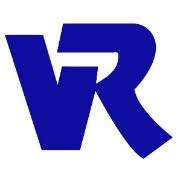Vocational rehabilitation services are based on individual needs and defined as any goods or services an individual might need to be employable, such as assistive technology devices and services. For instance, a person who is blind would need screen reading software to access a computer and people with a cognitive or mental disability might need a talking electronic reminder device programmed to prompt them when it is time to perform certain tasks.
Vocational rehabilitation can be provided by private organizations, but is not typically funded under managed care arrangements. Thus, most people apply to state vocational rehabilitation agencies that are funded through federal and state monies. Typically, state agencies have offices in their state's major cities and towns. State VR agencies do not necessarily offer the same services or deliver services in the same way in every state, so individuals seeking services must learn how to access the VR program in their own state. The federal VR component is administered by the U.S. Department of Education Rehabilitation Services Administration and authorized by the Rehabilitation Act of 1973 as amended in the 1988 reauthorization.Most vocational rehabilitation services are free for eligible applicants; however, applicants may be asked to use other benefits, such as: insurance, Pell grants or other financial aid for training or higher education, to pay part of program costs.
Best practices in vocational rehabilitation include individual choice, person-centered planning, integrated setting, natural supports, rapid placement, and career development. The term integrated setting refers to placing individuals in usual employment situations rather than making placements into sheltered workshops or other segregated settings. Natural supports are the person's already existing support network, including family members, service providers, and friends, who can help the person reach a goal, such as the employment of their choice. Person-centered planning is a technique in which a plan for a person's future is developed by a team consisting of the person and his or her natural supports, and the team develops a practical plan based on the person's wishes and dreams. Each teammember agrees to perform certain tasks identified in the plan to help the person reach goals. Unfortunately, not all VR programs incorporate all of these best practices.



 Contact Us
Contact Us







 Hospitals
Hospitals
 Doctors
Doctors
 Diagnostic
Diagnostic
 Pharmacy
Pharmacy
 Health Tips
Health Tips
 Blog
Blog

























Comments